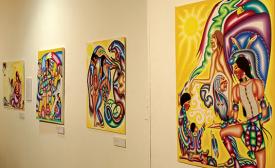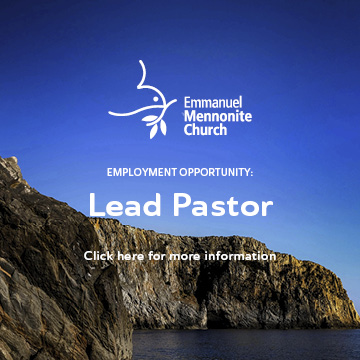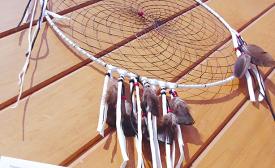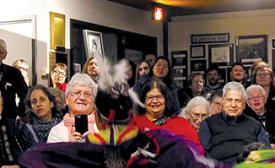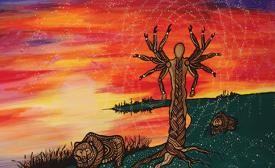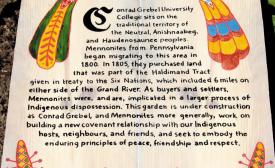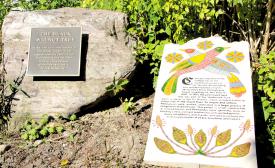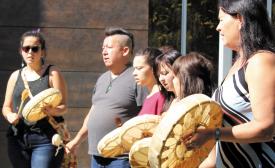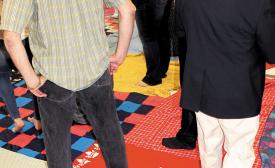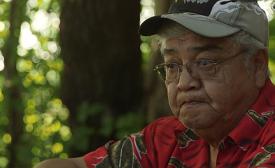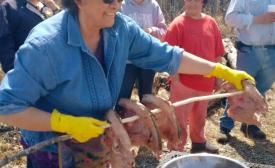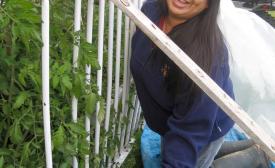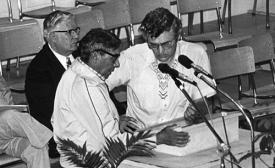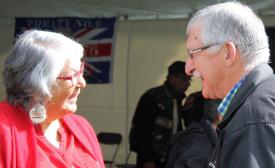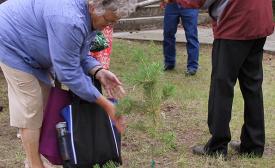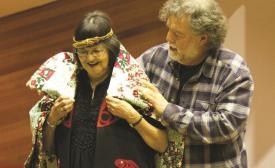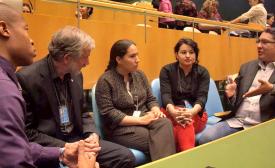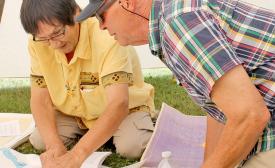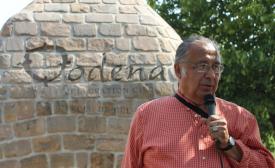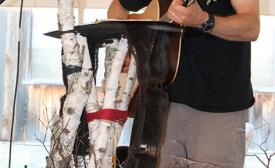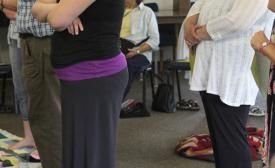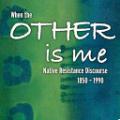Seeking reconciliation through multicultural art

Rosanna Deerchild, host of CBC Radio One's Unreserved, reads a poem from her book Calling Down the Sky. The book tells the story of residential schools in Canada and her own mother's experiences and struggles as a generational survivor. (Photo by Nicolien Klassen-Wiebe)

Bryn Friesen Epp of Home Street Mennonite Church in Winnipeg, adds a leaf to a collaboratively decorated tree. Each leaf contains a gallery visitor's hope for reconciliation and commitments to taking part in it. (Photo by Nicolien Klassen-Wiebe)
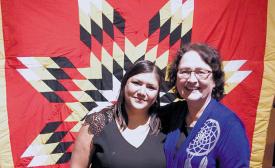
Clairissa Kelly and Marlene Gallagher organized the Reconciliation Through the Arts exhibition. (Photo by Nicolien Klassen-Wiebe)
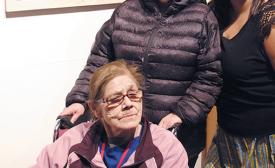
Clairissa Kelly, right, her mother Marie, and her Grandmother Lorraine, seated, are pictured in front of 'Granny Lorraine.' Kelly, coordinator of the Peguis Post-Secondary Transition Program at Canadian Mennonite University (CMU), and Rick Unger, a CMU maintenance technician, used acid on metal and etching techniques to create the rusted portrait. (Photo by Nicolien Klassen-Wiebe)
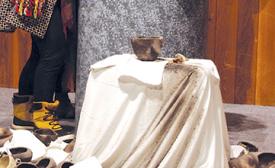
Jochebed Giesbrecht, Laura Carr-Pries and Allegra Friesen Epp stand around Tracy Fehr's installation of clay bowls. Fehr encourages visitors to take a bowl in honour of an important woman in their life and leave a note about the woman in its place. (Photo by Nicolien Klassen-Wiebe)

A collection of photographs and pieces of abandoned Canadian residential schools. (Photo by Nicolien Klassen-Wiebe)
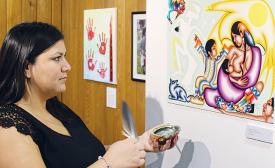
Clairissa Kelly smudges the Mennonite Heritage Centre Gallery in preparation for the exhibition's opening event. (Photo by Ray Dirks)
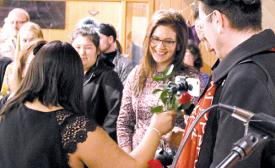
Clairissa Kelly gives roses to the many different artists involved in the Reconciliation through the Arts exhibition. Over 15 artists were involved in creating the many diverse pieces on display. (Photo by Ray Dirks)
Around 200 people gathered at the Mennonite Heritage Centre Gallery on Jan. 26 to celebrate the opening of Reconciliation Through the Arts, an exhibition of Indigenous and settler art that explores the history and present reality of colonization in Canada and different visions of reconciliation.

